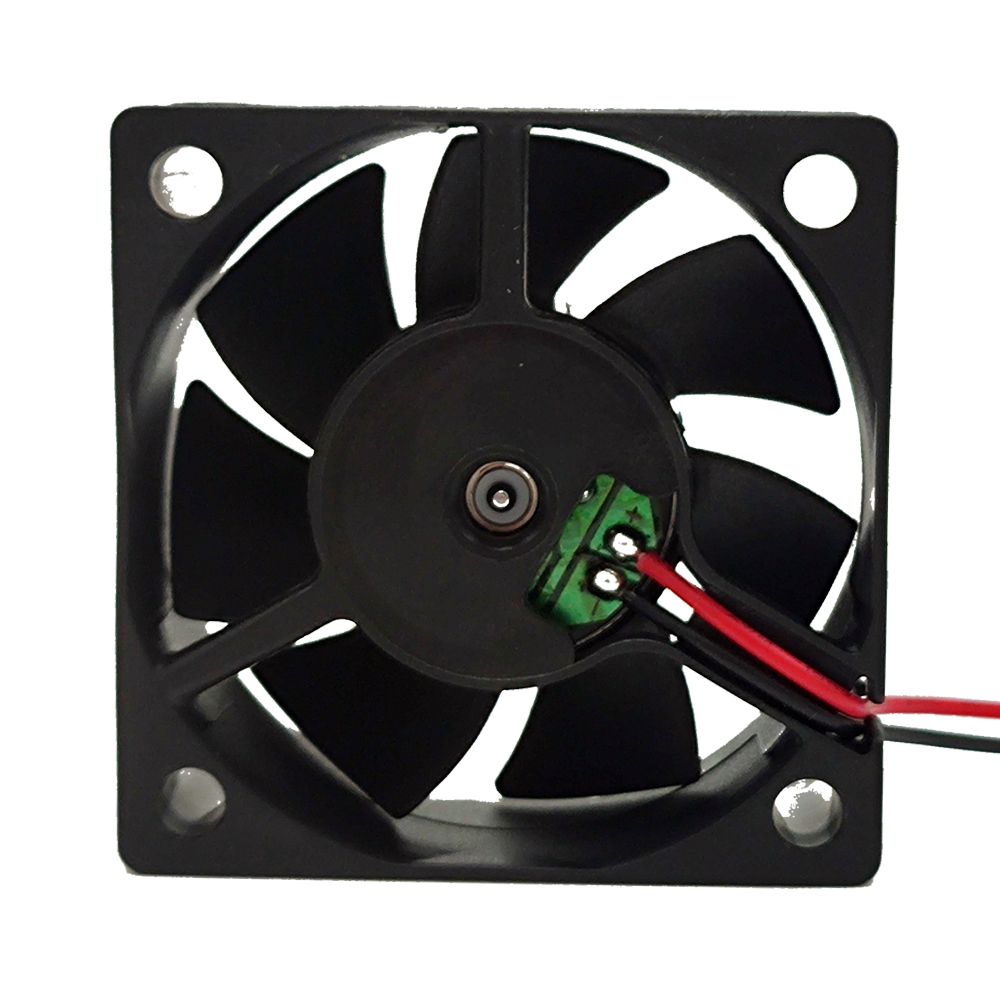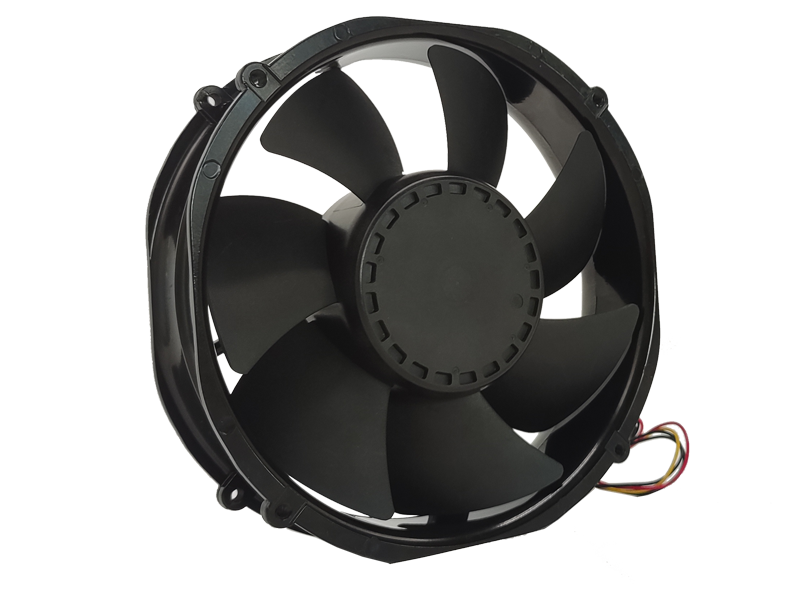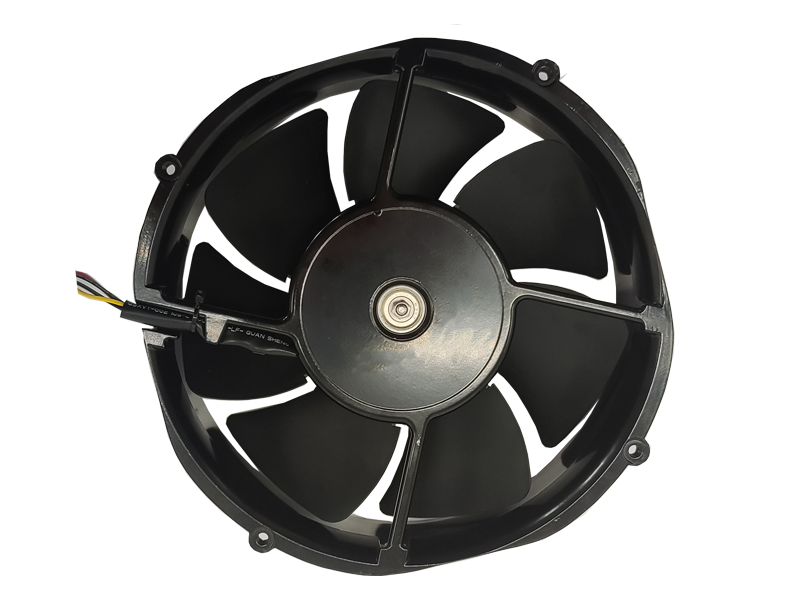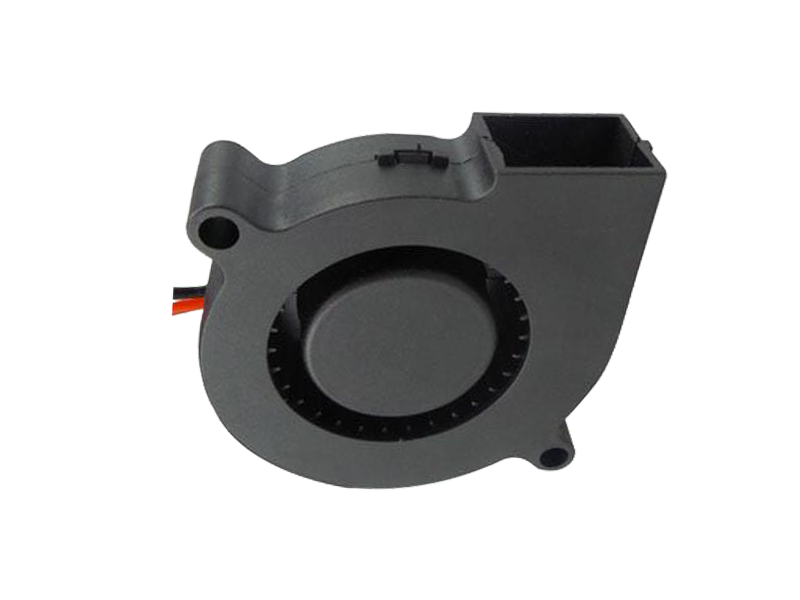In today's industrial environments, efficiency, safety, and cost-effectiveness are paramount in designing and maintaining operational systems. One of the most critical components in ensuring a productive environment is the industrial fan. Used across various industries — from manufacturing and logistics to food processing and agriculture — industrial fans are essential for cooling, ventilation, and air circulation. Whether the need is for ventilating large factory floors, ensuring proper airflow in warehouses, or maintaining optimal working conditions for machinery, industrial fans play a pivotal role.
However, when viewed from a product design perspective, industrial fans are far more than just utility devices; they are intricate systems whose design, features, and performance capabilities directly impact the efficiency and functionality of the environments in which they are used. This article will delve into the role of industrial fans from the product perspective, focusing on key design considerations, product differentiation, and future trends that manufacturers must account for when developing and selecting industrial fans.
1. Understanding the Role and Importance of Industrial Fans
Before diving into the technicalities of product design, it’s essential to understand the core role that industrial fans play across various industries. They are often used for two primary functions:
Cooling and Heat Dissipation:
In industrial settings where heavy machinery operates, generating significant amounts of heat, cooling is crucial. Industrial fans help regulate temperature by circulating air and providing cooling to both machinery and personnel. For instance, in manufacturing plants, excessive heat can cause equipment to overheat, resulting in system downtimes or failure. An efficient industrial fan ensures that temperatures remain within operational limits, enhancing the equipment's lifespan and minimizing the risk of breakdowns.
Air Circulation and Ventilation:
Proper ventilation ensures that there is a constant supply of fresh air, which helps prevent the accumulation of toxic gases, dust, or pollutants. In industries like mining or chemical manufacturing, ventilation is particularly critical for worker safety. Industrial fans play an essential role in maintaining air quality and ensuring that hazardous substances do not pose risks to health.
2. Key Product Considerations in Industrial Fan Design
From a product development perspective, designing and selecting an industrial fan requires careful consideration of several factors that impact both its functionality and its application. These considerations include airflow capacity, energy efficiency, noise levels, material durability, and integration with other system components.
Airflow Capacity and Efficiency:
The airflow capacity of an industrial fan is determined by its size, motor power, and blade design. Different industries have specific airflow requirements. For example, a factory floor with heavy machinery might require fans with a high airflow rate to efficiently dissipate heat. In contrast, a warehouse may only require moderate airflow for circulation purposes. In product development, manufacturers must ensure that the fan can meet these specific requirements while balancing energy consumption and performance. For high-efficiency systems, fans with optimized blade designs and energy-saving motors can reduce electricity consumption, making them more cost-effective over time.
Energy Efficiency and Cost-effectiveness:
In any industrial setting, energy costs are a significant factor. Industrial fans can run for long hours, and inefficient systems lead to high operational costs. Modern industrial fan manufacturers focus on energy-efficient motors, variable speed drives (VSDs), and materials that reduce friction, all of which help optimize energy use. The integration of IoT (Internet of Things) technology, which allows for real-time monitoring and control of the fan’s performance, also helps businesses optimize fan operation for energy savings. For example, some advanced systems adjust fan speed based on real-time temperature readings, ensuring that the fan runs at the most efficient speed.
Noise Levels and Worker Comfort:
Industrial fans, especially large ones, can be noisy, and excessive noise in industrial settings can negatively impact worker health and productivity. Chronic exposure to loud noise can lead to hearing damage or increased stress levels. From a product perspective, the fan's design must prioritize low noise levels without compromising on airflow efficiency. This can be achieved through design modifications such as quieter motor enclosures, vibration dampening systems, and optimizing blade shapes for quieter operation. Noise-reducing fans are particularly important in environments like offices within industrial settings, or facilities that require compliance with occupational health and safety regulations.
Material Durability and Weather Resistance:
Industrial fans are often used in harsh environments, from high-temperature manufacturing facilities to outdoor areas exposed to moisture and dust. As a result, the materials used in fan construction must be durable and resistant to environmental factors. High-quality stainless steel, coated aluminum, or corrosion-resistant metals are commonly used for components exposed to moisture, heat, or chemicals. For outdoor applications, fans may also be equipped with weatherproof housings and rust-resistant finishes to ensure longevity.
Size and Installation Flexibility:
Industrial fans come in a variety of sizes and configurations to suit different applications. The space available for fan installation in an industrial setting plays a significant role in the type of fan selected. A large factory floor might require large, high-volume fans, while smaller rooms or confined spaces may benefit from compact, wall-mounted units. Furthermore, the integration of fans with existing HVAC systems or ventilation networks needs to be considered to ensure efficient airflow distribution across the facility.
3. Product Differentiation in Industrial Fans
When assessing industrial fans from a product perspective, it’s also important to understand how manufacturers differentiate their offerings. Many companies compete in the industrial fan market by offering specialized features or customization options that address specific operational needs.
Customization for Specific Applications:
Different industries have unique cooling and ventilation needs. Manufacturers often offer customized solutions tailored to specific operational requirements. For example, in the food processing industry, fans need to meet hygiene standards and be easy to clean. In contrast, fans used in mining or chemical plants might need explosion-proof designs to protect against volatile gases. Product differentiation based on specific needs allows manufacturers to provide targeted solutions that enhance operational efficiency and safety.
Smart Fans with IoT Integration:
The growing trend of automation and smart technology has also influenced the design of industrial fans. Some manufacturers offer fans with IoT integration, enabling remote monitoring, control, and predictive maintenance. These systems can track fan performance, detect faults early, and optimize the fan's operation in real time, reducing downtime and maintenance costs. Such smart systems are particularly valuable in large facilities with many fans or in industries where fan performance directly impacts production rates.
Low-Maintenance Designs:
Industrial fans are often subject to harsh working conditions and long operating hours. The wear and tear on moving parts can lead to maintenance issues, which can disrupt operations. To address this, manufacturers are incorporating low-maintenance designs into their products. This includes sealed bearings, self-lubricating motors, and rust-resistant materials that extend the lifespan of the fan and reduce the need for frequent servicing. This product differentiation ensures that businesses can operate more efficiently without the constant need for fan repair or replacement.
4. Future Trends in Industrial Fan Technology
As industries evolve, so too do the demands for more efficient, reliable, and advanced industrial fans. Here are some of the key trends shaping the future of industrial fan technology:
Energy Efficiency and Green Technologies:
Energy efficiency will remain a primary focus in industrial fan design, driven by both regulatory pressures and the need to reduce operational costs. Future fans will incorporate more advanced energy-saving technologies, such as variable frequency drives (VFDs) that adjust fan speed based on real-time demand, or even integration with renewable energy sources like solar or wind power.

Automation and Predictive Maintenance:
The future of industrial fan technology lies in automation and predictive maintenance. Through the integration of sensors and real-time monitoring, industrial fans will be able to predict when maintenance is required, optimizing their performance and preventing failures. Such systems will reduce downtime, increase efficiency, and extend the lifespan of fans, all of which have long-term cost benefits.
Noise Reduction Technologies:
As noise pollution becomes a growing concern in industrial environments, noise reduction technologies will continue to evolve. Future fans will incorporate advanced sound-dampening materials, innovative motor designs, and blade optimization to minimize noise without sacrificing performance.
Smart, Connected Systems:
The ongoing digitization of industries will lead to the rise of connected, "smart" fans that can communicate with other parts of the industrial infrastructure. This connectivity will enable manufacturers to integrate their fans into broader energy management systems, creating more responsive, adaptive environments where resources like air circulation and cooling are optimized based on real-time conditions.
5. Conclusion
Industrial fans are integral components in maintaining efficiency, safety, and comfort in industrial settings. From a product development perspective, there is no one-size-fits-all approach to fan design. Understanding the unique requirements of each application — whether it's cooling, ventilation, or air circulation — allows manufacturers to create tailored solutions that maximize efficiency and reduce operational costs. As the demand for energy-efficient, low-maintenance, and smart fans continues to rise, innovation will drive the evolution of industrial fan technology, ensuring that these products remain an indispensable part of industrial infrastructure in the future.
Recommended Products

The main purpose:Car charging station

The main purpose:Car charging station

The main purpose:Electronic refrigerators, water dispensers, direct drinking machines, inverter power supplies
Address:No. 4137, Longgang Avenue (Henggang Section), Henggang Community, Henggang Street, Longgang District, Shenzhen
hotline:13530005572(Chen)15112579390(Li)


Welcome all friends to come for consultation and negotiation.
Copyright 2024 @ Shenzhen Youneng Xinyuan Electronics Co., Ltd.,(industrial fans,industrial blowers,axial fans,cooling fans manufacturer,centrifugal fans,ac cooling fans,dc cooling fans)